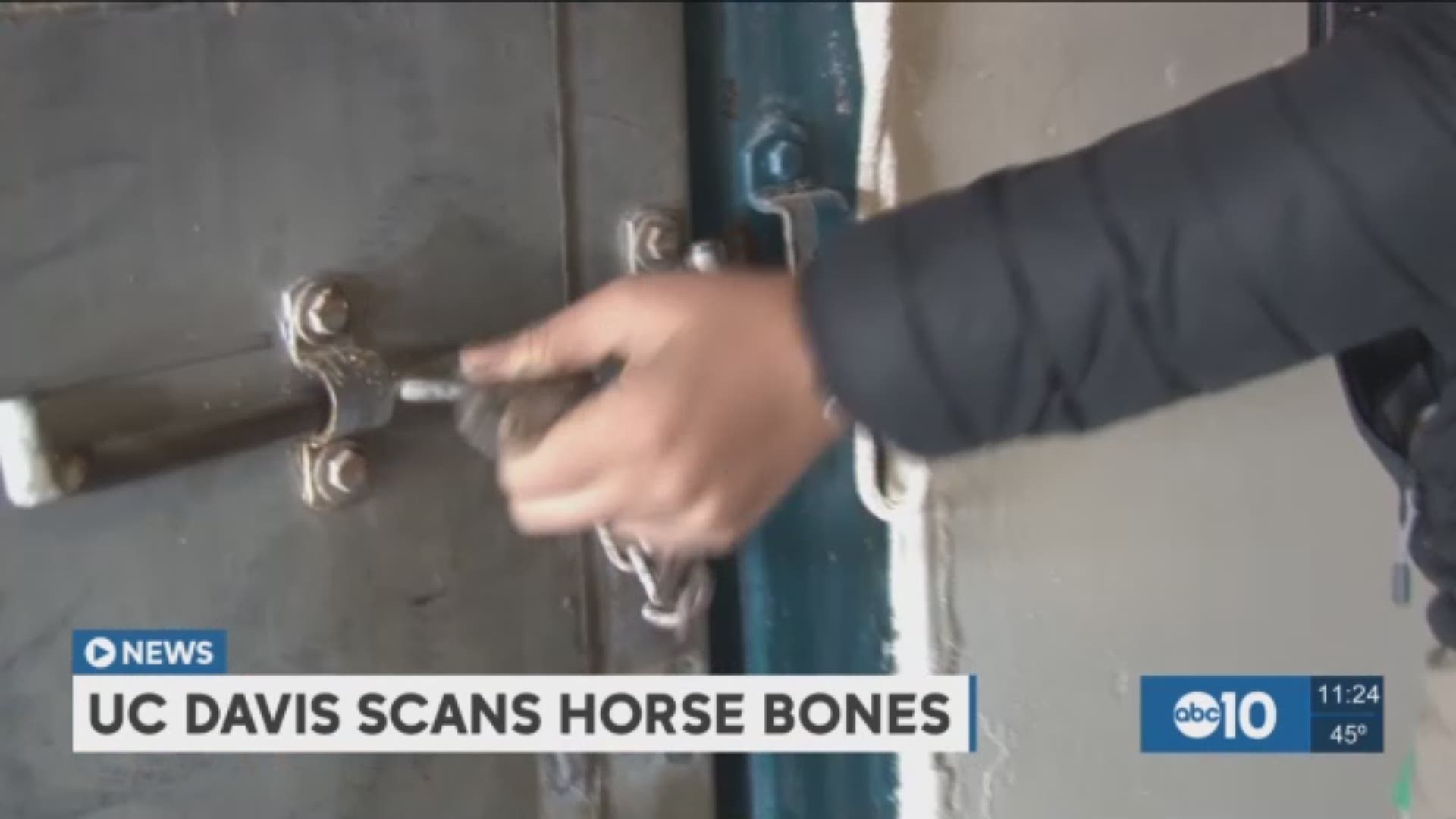UC Davis Veterinary School is using their new positron emission tomography [PET] scan machine to diagnose injuries on horses. It’s the only facility of its kind using the equipment.
The medical school is helping prevent injuries and extend horse’s running career.
“PET scan has never been done on horses because of the configuration of the machine. It was too big,” said Dr. Mathiew Spriet, a radiologist at UC Davis. “Our mobile machine allows us to get images we couldn’t get before."
The mobile PET scan was designed for human heads. UC Davis uses it to check horse legs.
The PET scan is a pretty complicated machine. The horse is injected with a weak dose of a radioactive substance. That substance works its way into bones.
The PET scanner measures where the radiation is and shows doctors weak or injured spots in the bones.
"The radiation has a short half-life,” Spriet said. “It will pass through the horse in a matter of hours."
The short radiation exposure does not hurt the horse, Spriet said. Doctors do have to work fast because the horse is under anesthesia and the radioactive substance dissipates quickly.
Six horses have already gone under clinical trials.
More work is needed before the technique becomes regularly available for animals at UC Davis. With more study the PET scan will become useful in helping diagnose and prevent injuries in horses.
"The PET scan gives us a three dimensional view of the bone," Spriet said.
Doctors at UC Davis are using the PET scan and their bone scanning CT machine together. This allows doctors to give a more accurate diagnosis so they can find more accurate treatments.

